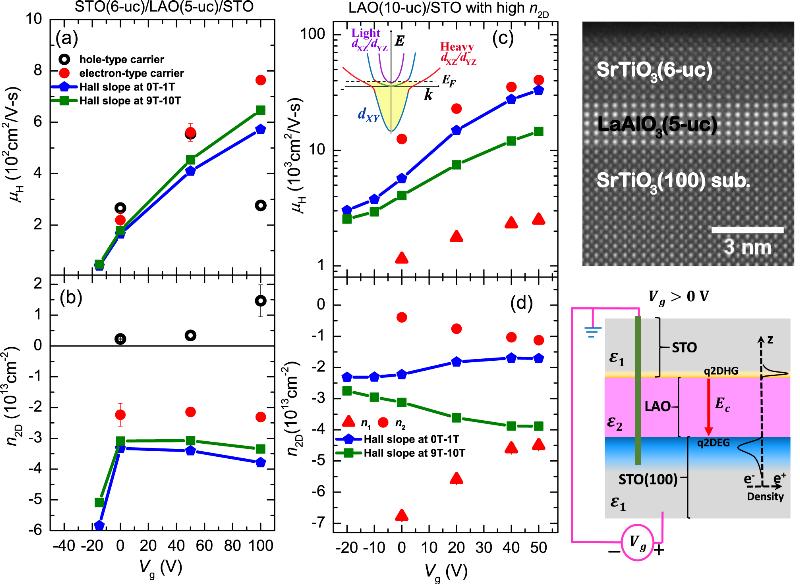The experimental evidence for the existence of quasi-two-dimensional hole gas at complex oxide interface
A number of discoveries have been made for the quasi-two-dimensional electron gas (q2DEG) at the complex oxide interface systems, but the possibility of a quasi-two-dimensional hole gas (q2DHG) at complex oxide interface and its experimental confirmation remain debatable. In a recent collaborating work led by Dr. Wei-Li Lee at IoP AS and Dr. Ming-Wen Chu at CCMS NTU, high quality ultra-thin epitaxial oxide films were grown and characterized by Dr. Akhilesh Singh, who is the first author of the published paper, using an oxide molecular beam epitaxy facility at IoP. Electric gated devices based on SrTiO3(6-uc)/LaAlO3(5-uc)/SrTiO3 (100) were then fabricated to further tune the interface conducting channels. From complete low-temperature magneto-transport measurements with a gate voltage tuning, the data were analyzed and fitted rigorously using the two-band transport model, which confirms the existence of such a q2DHG at oxide interface. The existence of both electrons and holes has enriched the functionality for semiconductor-based devices in the past. The existence of q2DHG at complex oxide interface not only largely extends the scope for complex oxide electronics but also provides a new platform for exploring new fundamental physical phenomena in matter. This work has recently published in Physical Review Materials (Phys. Rev. Mater. 2, 114009 (2018)).

Journal Links: https://link.aps.org/doi/10.1103/PhysRevMaterials.2.114009